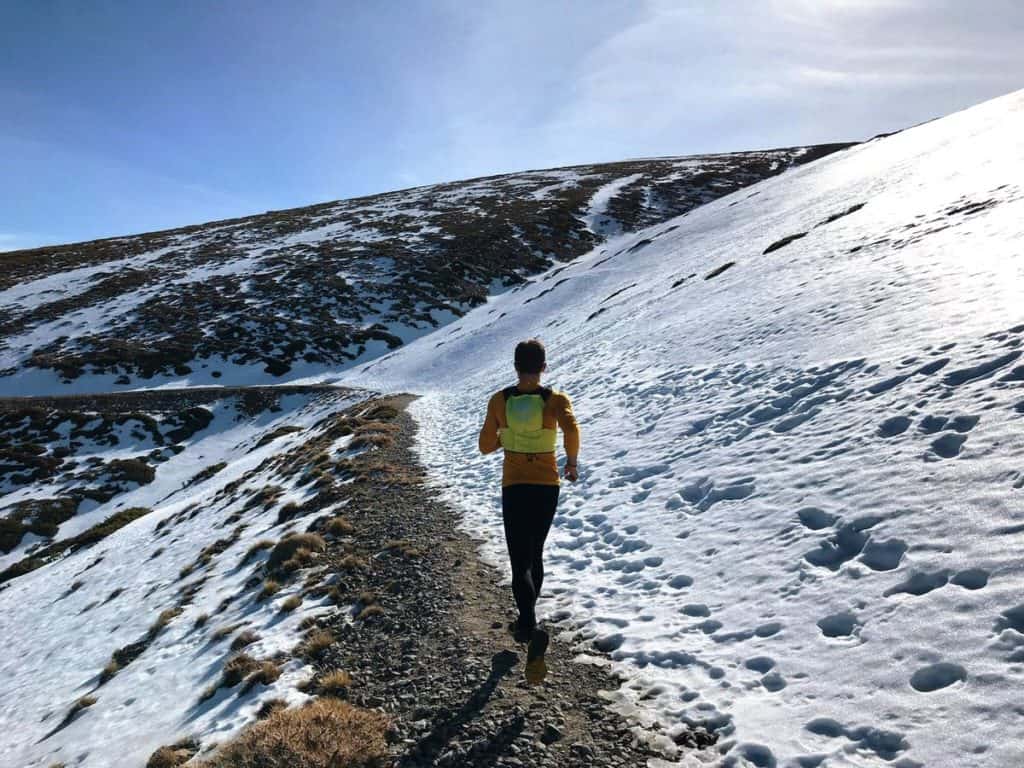
I have always done most of my running alone. Sure, when I started out it was easier to find someone to run with. However, as the distances of my goal events got longer and longer, the pool of potential running partners got fewer and fewer. That got me thinking about safety out on the trails when going solo.
How to stay safe when trail running alone? The most essential aspect of staying safe when trail running alone is having a plan that includes a backup plan should anything go wrong.
Sure there is safety in numbers, and running in a group is a fundamentally social activity. However, for meditative serenity and introspection nothing beats being alone out on a stunning trail as the first rays of daybreak filter over the horizon. Still, we need to stay safe out there. This is what I do.
Failing To Plan is Planning To Fail
Planning is the most important aspect of safety when trail running alone. True, planning is important when trail running with others. However, when you are with others you have safety in numbers on the trail in case of encountering dangers as well as having someone on hand to go for help if things go awry.
When you are out solo, you have to be self sufficient in all aspects. That is when planning really becomes vital.
This covers aspects of planning your route, to knowing the dangers of the area, what essential gear to pack to clothing choices.
Run With Confidence
This may sound like a strange focal point for safety out on the trail, but bear with me. If you display a strong running form, shoulders back, slight forward lean and a strong stride you will display a look of confidence.
Would be attackers seek out the vulnerable and timid. Most potential attackers are cowards at heart so will not mess with you if you appear confident and self-assured. Plus, running confidently means that most attackers won’t be able to catch or keep up with you if you put in a surge.
Confidence includes interactions with other runners, hikers, and bikers out on the trail. Greet others that you pass on the trail. When passing someone head-on, do not be afraid of confidently making eye contact for a quick hello before picking up your trail line and make the pass with a small surge. When you pass someone from behind. Call out a hello when still fifteen to twenty yards back and shout Passing Left or Passing Right.
Be Aware of Your Surroundings
Maintain vigilance when you are out running. Be aware of places where a potential attacker may be hiding, for example, thick bushes out on the trail. In the city, dark doorways or alleyways will be the main areas requiring additional awareness.
If you are on a trail used by mountain bikers if possible run in the opposite direction to the cyclists to help you see the mountain bikes and take evasive action. The same applies if part of your run is along a road. Always face the oncoming traffic. That gives you maximum awareness and control of your surroundings.

Know The Dangers
In most nature areas probably the biggest danger that you are likely to face is other humans. That is a sad truth of the society that we live in.
However other parts of the country there are certain wildlife dangers that you could face. For instance there might be bears, or mountain lions, or even snakes as potential dangers.
If you are running in a canyon during the rainy season flash flooding is always a risk because a thunderstorm fifty miles or more away can come down your canyon with little to no warning.
Another very real risk during certain seasons in all nature areas is whether you might encounter hunters or potentially poachers.
Knowing the risks allows you to plan and pack to be able you to plan and pack in a way the mitigates your risk.
One piece of vital gear when heading out solo is a space blanket. It weighs almost nothing and takes up very little space in your hydration pack. However it can easily mean the difference between life and death if you are forced to overnight out on the trail.
Tell Someone Your Route And ETA
Once you have decided and planned your route it is important to tell someone your planned route as well as your expected time of arrival. This can be a member of family or friend, or even a fellow runner that you know through social media.
Your expected time of arrival should be in two parts. The first part is the time that you realistically expect to finish and the second is the “panic time”.
What I do is I normally add at least one hour to my realistic finishing time so that minor delays and rest stops can be accounted for.
Panic time is the time that search and rescue needs to be mobilized if you have not notified your safety buddy that all is OK. That leads to the next important point. Keep contact with your safety buddy. This not only in the event that you are delayed along the way and might miss your expected time of arrival. It is also in the case where you did finish your run safely and you are driving down for the trail head all safe and sound.
One of the things that used to piss me off when I was in mountain rescue is being out overnight in the mountain in the rain, sleet, and wind looking for someone that is tucked up warmly under their duvet at home.

Carry Your Phone
These days your phone is an even greater necessity that in the past. Unless you go deep into the back country you will have mobile phone coverage.
This will allow you to call someone for assistance if something happens.
Another important feature is various GPS tracking apps that you can download. For instance, the Find My Friends app for
The bSafe app also has a voice-activated panic button that immediately sends an emergency message to all your designated safety “guardians” that includes your exact GPS location. Once the emergency feature is activated the app records and live streams video and audio to the phones of your guardians. The video and audio files are saved onto your mobile phone and theirs.
Both MapMyRun and STRAVA have a feature that allows you to retrace your exact route back to your starting point. However, at this stage both these apps and the GPS watches that have the same functionality merely show your location on the map on your chosen path with no warning system for when you deviate from your route.
GPS voice technology exists already, so there should be no reason why these apps shouldn’t already be able to give you voice prompt directions to help you navigate back to the trailhead in the dark.
Remember that using the GPS on your phone will drain the battery more quickly. Consider taking a fully charged portable power pack, especially if your intended route is long.
Ditch the Headphones But Not The Music
There is a reason why it is a good idea to ditch the headphones. Running with headphones, especially those of the noise canceling variety cut one of your vital senses regarding potential danger.
Just because you have ditched the music does not mean being separated from your tunes. If you run at the quietest time of the day, simply turning up the volume on your phone will give you music loud enough to hear while still being aware of your surroundings.
If you pass other trail users they will only be exposed to your tunes for mere seconds.
Finally, when STRAVA upgrades to include voice prompts in their route follow function on their mobile app, you’ll be able to get voice directions as you go.
Mix Your Routine
Running along the same isolated path in the dark at exactly the same time every single day makes you vulnerable to anyone who takes the time to get to know your routine.
A far better plan will be to build up a library of at least five different routes and rotate between them randomly switching direction as well. If it is possible to switch up your run times, do that as well. Just be sure to inform your backup safety buddy which route you are an and at what time.

Have a Canine Friend With You
One sure option if you cannot find a partner to head out on the trails with you is to run with your dog.
Don’t have a dog? Offer to take a friend’s or neighbor’s dog for a run. You’ll do them a favor and you’ll have a degree of protection. You never know, it might develop into a little side hustle that will subsidize all those race entry fees.
Remember to have water for your four-footed friend if you are going to be running long. However, with this super cool saddlebag harness that I found on Amazon, your canine friend can carry his or her own water and snacks.
Be sure to check out the post that I wrote all about how to trail run with your dog. I cover everything from which dog breeds are best suited to trail running to specific dog training tips for trail running both on-leash and off-leash. Check it out by clicking this link.
Be Visible
We all know about the importance of being highly visible when road running. It is equally important out on the trails.
Not only is your visibility important for encountering other trail users, there is also a possibility that there may be hunters in your area.

Fighting Fit
Being able to defend yourself is very important, both on the trails and off.
By this I am not advocating that you hit the trails with an AR15 slung over your shoulder, safety catch off, just in case.
Many running shoe shops have information about the nearest self defense classes that are available. Even if you never have to use your self defense training, just knowing that you can defend yourself will make you more confident out on the trails.
The two martial art modalities that I see having the best practical application for the narrow confines of a trail are Krav Maga and Brazilian Ju-Jitsu.
Related Questions
How to protect yourself when running alone? Research the area and trail where you will be running so you know all your potential dangers. Plan and pack for your run in a way that will reduce your level of risk.
How do I safely run trails? Slow down and take shorter, quicker strides making sure that you lift your feet enough to clear tree roots and rocks. Scan the trail five to ten feet ahead of you for potential obstacles. Keep a minimum of ten feet from other runners in case they trip and fall.
